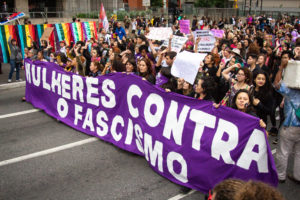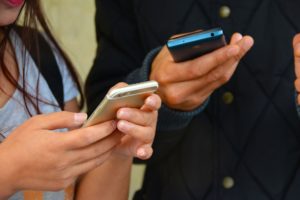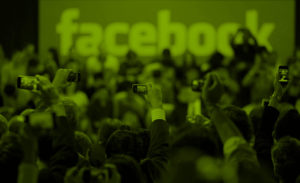Blockchain is getting a lot of buzz in social change circles. We want change makers and social change leaders to be able to better understand what a blockchain is, how and when it might be useful and what success with blockchain looks like.
On 26 July, 2018, MobLab Live hosted a conversation with Daisy Ozim (Blockchain for Social Justice, Resilient Wellness), Veronica Garcia (Bitlumens), Lee Brenner (Global Blockchain Business Council) and campaigners around the world to share experiences and ask questions about blockchain technology and its real life examples to advance social change work.
Blockchain is being tested in international development, renewable energy, digital identity and poverty alleviation projects around the world. Our conversation identified several examples and lessons. Watch a recording of MobLab Live below and check out our takeaways and resources.
What to know about blockchain now
The core components of blockchain
A blockchain system includes security, privacy and transparency. Daisy Ozim shared four core components of a good blockchain:
- It’s decentralized: A blockchain system works across a peer-to-peer network that provides everyone with power and authority over their transactions.
- It’s distributed: Access to transaction records and other information is copied across the system. Records are protected from hacking, seizure and other threats because there are multiple copies.
- Interoperable: It’s possible to exchange data between different unrelated blockchains.
- Anonymous: One doesn’t need to share identity with others engage in the blockchain.
Blockchain is potentially fundamental to a new internet
Blockchain is a new development in the field of science, digital tech and economics. It’s too early to jump to conclusions about blockchain’s impact because it is at the same place as the idea of the internet was 30 or 40 years ago.
Our guests were unanimous in a shared view that we have yet to see (or even understand) the potential of blockchain to transform how we do much of what we take for granted today. Blockchain is changing how we track supply chain of grains, execute contracts, get workers and farmers paid on time, empower local community development, support small businesses, stand behind reliable electronic voting and more. Blockchain’s borderless networks disrupt how governments, banks and corporations move, track and secure resources (from money to information).
Blockchain is more than cryptocurrency + Examples
We often hear about blockchain in the context of cryptocurrency (think Bitcoin and Ethereum). But blockchain is supporting non-currency transactions like property transfers, land registries and renewable power sharing in neighborhoods and states (example: Power Ledger in Australia).
In Nigeria’s delta region, an area hard hit by environmental degradation caused by the oil industry, residents are cleaning land and taking before and after photos of their work. Staff at a group called SELA review photos and deploy blockchain tokens to award value.
E-coin project is utilising blockchain for energy conservation and also for inter-communal financial system to trade food, clothing with merchants.
At the United Nations Zaatari refugee camp in Jordan over 75,000 refugees are using a blockchain system integrated with biometrics to secure and track World Food Program supplies. The system helps organisations create the accountability and transparency needed to protect supplies typically at risk from governments and criminals.
This and other blockchain identity systems can help individuals protect their information from centralised governments. Consider what happens to stateless refugees who can no longer document their birth, education, finance, employment and other histories. But it’s also puts identities at risk of data mining and surveillance.
Oh, but there are obstacles
Like any other technology ,blockchain can be used by both good and bad actors. It may lead to disempowerment and exploitation of the marginalised communities who are already facing threats of surveillance, data mining and leaking.
Our guests suggested that the full potential of blockchain is yet to come when (or if) the tools are more widely adopted. Not is a critical time in blockchain development. We can preempt a lot of problems by tackling complex ethical and policy questions.
- It’s important to educate people about blockchain. More people need to understand how it works as well as the pros and cons of deploying a blockchain platform.
- We need to talk openly about how data mining and surveillance can impact people, especially at-risk communities like refugees and people in developing or authoritarian states.
- Many people are working on blockchain code of ethics that can be scaled and customised across industries to guide development, delivery and decision-making. These efforts need more and more diverse participants.
- Put bad and good actors of blockchain use on display so that we make the ecosystem more transparent.
Five things NGOs should know about blockchain now
- These are blockchain’s early days.
- There’s no perfect implementation yet.
- Think about partnerships with people and companies working in blockchain. Look for opportunities to co-create projects.
- Design applications and tools based on people and and their needs.
- Test the technology and platforms. Measure, iterate and adapt.
Resources and further reading
Here’s an assortment of examples and links mentioned during MobLab Live as well as resources shared by our guests, team and network? Send an email to editor@mobilisationlab.org if you want to add other examples and links.
- Blockchain for Good Facebook group
- Blockchain for Social Justice
- Bitlumens
- Global Blockchain Business Council
Examples, Projects and Stories
Categories:
tech, tools and tactics



